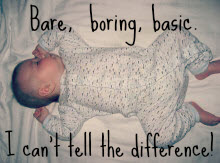It's hard to go against our instinct as parents as it's rarely helpful. However when it comes to setting up the crib for a newborn our instinct to bundle and package our children in soft, abundant bedding may be intuitive, but it's not smart. In fact mounting data contends not only is it unsafe, it's still widespread. Up to half of parents in the U.S. are still using soft bedding with their babies. A Pediatrics study out this week found that parents commonly report using incorrect bedding (thick blankets [37 percent], blankets under baby [29 percent] most commonly). Soft bedding use was more prevalent in minorities, teenage mothers and moms with lower education levels (although it should be noted young moms were underrepresented in the study while white, higher-educated and older mothers were overrepresented). Lowest use of soft bedding was in college-educated moms, the highest use was in teen moms. Although it must be stated that study authors asserted all groups had high levels of soft bedding use with "1/2 of college-educated mothers putting their infants to bed with some type of bedding."
Bottom line: basic, boring, and bare cribs are best for babies. Less is more here.
We know bedding isn't everything when it comes to risk of sudden infant death syndrome (SIDS). The triple-risk model reminds us that risk for unexplained sudden infant death is a mixture of three things, only one of which we can control after the baby is born. The first risks are intrinsic risks, namely genetics, premature birth, male gender and prenatal exposure to alcohol/cigarette smoke. The second is age and timing, SIDS is most common between one and four months of age. But the third risk, and the one thing we as parents can truly control, is where our baby sleeps.
Bare, basic, boring cribs are best for baby.
After the "back to sleep" campaign launched in the mid-1990s pediatricians, midwives, nurses and public health officials had great success changing habits while encouraging parents to put babies to sleep on their back. But it seems progress is slowing a bit as we learn more about loose bedding and pediatricians just aren't getting the word out about like we need. Over the last 10 years or so progress has slowed. And while the numbers of SIDS have gone down, the number of unintentional sleep-related suffocation deaths has increased. Frankly, it's hard to get the message across when there are still many products on the market (and even more images in media) that go against the data that a bare crib with a baby in the center sleeping on the back is the safest.
We can do better.
Mastering The Space For Your Baby's Sleep
- You don't need to turn up the thermostat: Overheating has been linked to an increased risk for SIDS. Your baby should be in no more than one layer more than what you have on to be comfortable.
Of note: Today the Ohio Chapter of the American Academy of Pediatrics reached out to share their message of #saynotobumpers. They're encouraging lawmakers to follow in the state of Maryland's footsteps and enact a ban on the retail sale of crib bumpers everywhere. Why sell them if they're not safe? Learn more about the campaign here.
